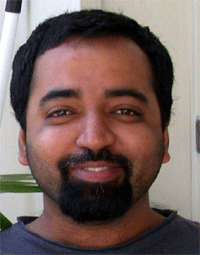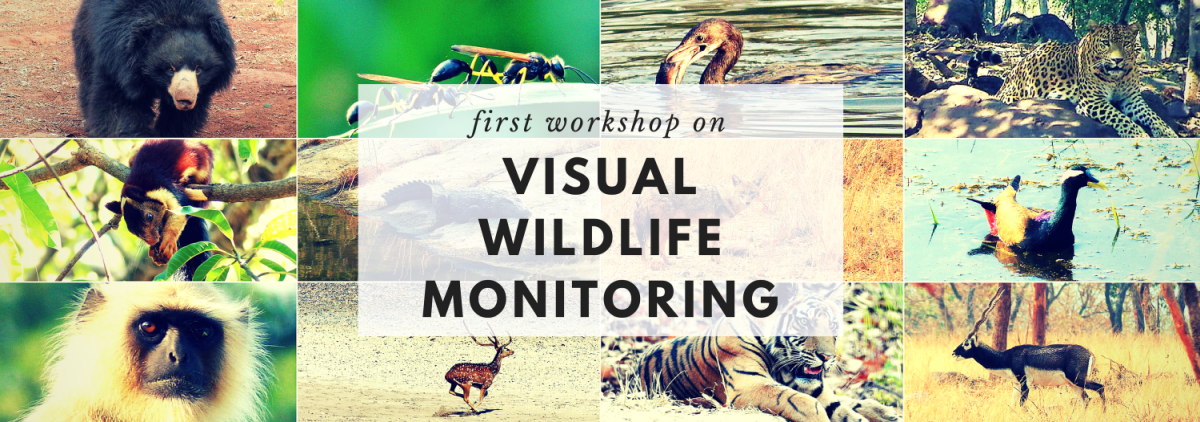The first workshop on Visual Wildlife Monitoring (VWM 2017) is to be held on Oct. 29th 2017 in conjunction with the International Conference on Computer Vision ICCV 2017, in Venice, Italy. We seek to bring together researchers working on Visual Wildlife Monitoring from various disciplines. The half-day workshop will have invited speakers, oral presentations and a poster session.
Aims and Scope
Wildlife monitoring is crucial for conservation of biodiversity and ecology. In recent years, passive and non-invasive methods for data collection have been used by leveraging advances in sensing, communication and information technology. Image data has been particularly useful for monitoring the population, health, behavioral, and breeding patterns of various species. For monitoring large land mammals, camera traps have been extensively deployed in strategically chosen forest regions most frequented by these animals. The use of camera traps have rapidly gained popularity among conservation biologists and ecologists due to their cost effectiveness, ease of use and reliability as a monitoring tool.
Various other sources of visual data exist which can be used for wildlife analysis and monitoring, e.g., citizen science initiatives across the globe allow everyday users to submit and explore different wildlife images and videos. Such initiatives have led to an unprecedented growth in the volume of visual data, much of it captured in uncontrolled environmental conditions with varying pose, lighting and visibility. The prohibitively large amount of data precludes manual processing as before and motivates the need for automation in all stages of the wildlife monitoring pipeline. Crowdsourcing efforts helps mitigate simpler problems like identification of common species, but are of limited use in more specialized cases such as distinguishing between individuals or rare sub-species.
Workshop Topics
With advances in computer vision techniques, especially in the areas of object detection, fine-grained recognition, action recognition and multi-object tracking, several problems in wildlife monitoring can be solved automatically or with little manual assistance. The goal of this workshop is to bring together members of the computer vision community and streamline their efforts to automate various stages of the visual wildlife monitoring pipeline. We seek advances broadly in the areas of:
- Visual Identification of Wildlife
- Detection and identification of distinct individual animals or birds in images and videos.
- Species-level classification in images and videos.
- Feature representations for visual animal biometrics.
- Shape and size estimation using conventional and specialized visual sensors.
- Video Analytics for Wildlife Monitoring
- Tracking of animals in videos.
- Recognizing various actions in animals and birds, e.g., actions like feeding, fighting, grooming, etc.
- Analytics for group behavior understanding, e.g., tracking of herds in aerial videos, counting individuals in a group, re-identification of herds or groups.
- Visual Monitoring Tools
- Embedded visual sensing technology for wildlife monitoring.
- Interactive, semi-automatic software tools for wildlife monitoring
- Innovative Computational Directions/Applications
- Computational photography for improved wildlife sensors.
- Autonomy and Control in monitoring (e.g. using UAV for image acquisition, dynamic recognition)
- Leveraging ecological models for adaptive monitoring
- Unsupervised, semi-supervised and supervised learning methods for detection, identification, tracking and behavioral understanding of individual or animal groups.
Organizing Committee
 Saket Anand Infosys Center for Artificial Intelligence IIIT-Delhi |
 Ryan Farrell Brigham Young University (BYU) |
 Sai Ravela Massachusetts Institute of Technology (MIT) |
Contact Information
For general information, please contact: Saket Anand IIIT-Delhi, New Delhi, India anands at iiitd.ac.in
